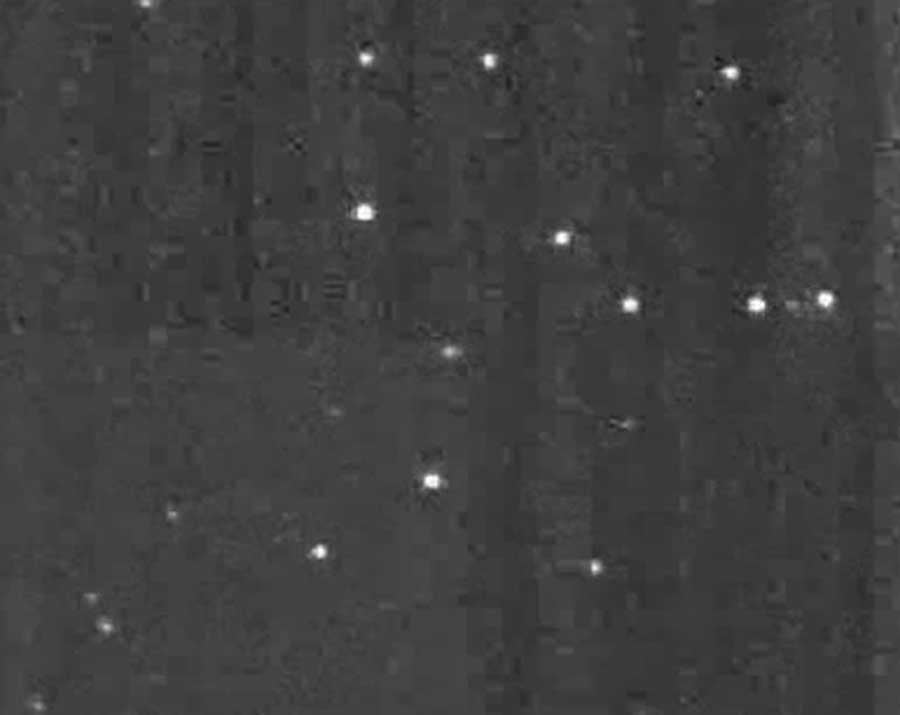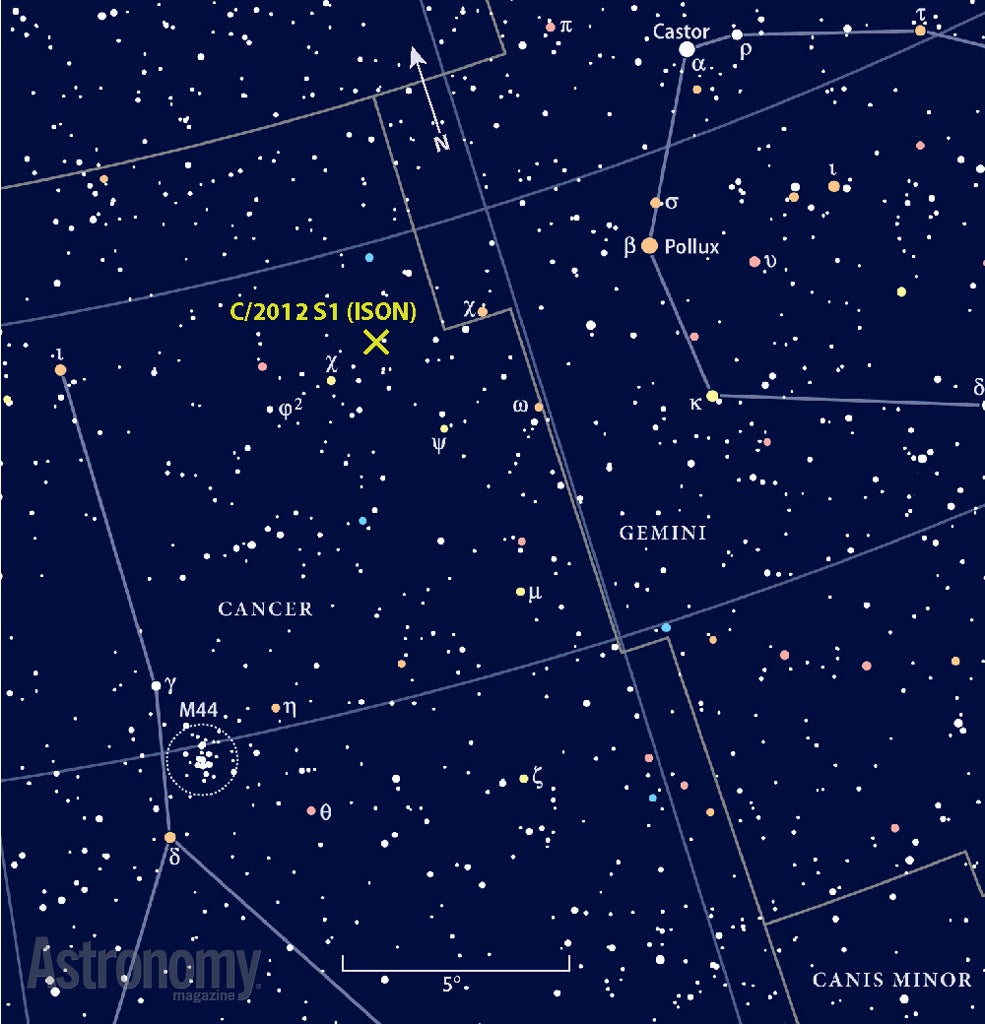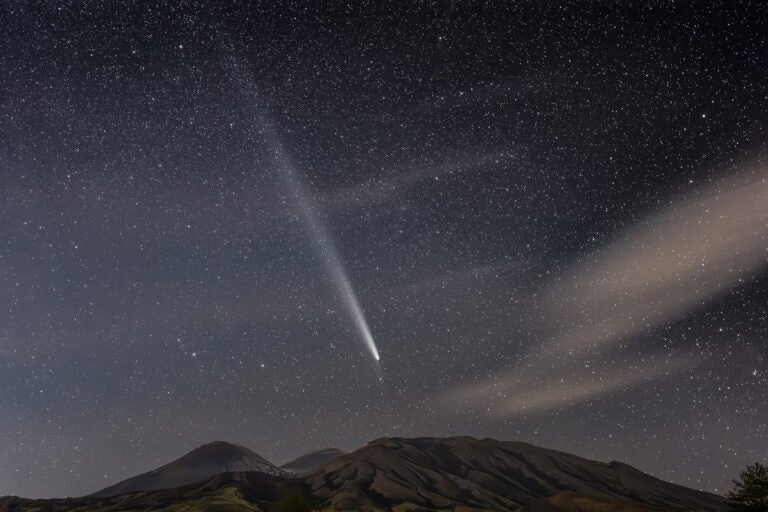Two astronomers, Vitali Nevski from Vitebsk, Belarus, and Artyom Novichonok from Kondopoga, Russia, discovered the comet on images they obtained September 21. They used the 16-inch (0.4-meter) Santel reflector of the International Scientific Optical Network, whose abbreviation — ISON — is now the Comet C/2012 S1’s common name. When the two scientists found the comet, it glowed weakly at magnitude 18.8. As a comparison, it would take the light from more than 100,000 such comets to equal the faintest star visible to the naked eye from a dark site.
According to predictions, the comet will approach to within 0.012 astronomical units (1.1 million miles [1.8 million kilometers]) of the Sun at the end of November 2013. One astronomical unit (AU) equals the average distance between the Sun and Earth, about 93 million miles (149.7 million km). Then, in January 2014, the comet will approach to within 0.4 AU (37.2 million miles [59.9 million km]) of Earth.
When the comet is closest to the Sun (a moment astronomers call perihelion), it may shine a dozen times as brightly as Venus, normally the brightest “starlike” object in the sky. Unfortunately, on that date it will lie only 4.4° north of our daytime star, and the Sun’s glare may hide it from the view of casual observers.
Immediately after reaching perihelion, Comet ISON heads north. And while the comet fades as its distance from the Sun increases, it still should be as bright as Venus, but with a spectacular tail. Its position will allow observers all over Earth to see it, but those in the Northern Hemisphere will get the better views as Christmas approaches. In fact, on January 8, 2014, the comet will lie only 2° from Polaris — the North Star.
Astronomy will cover Earth’s encounter with Comet C/2012 S1 (ISON) in great detail in the coming year. Stay tuned!











